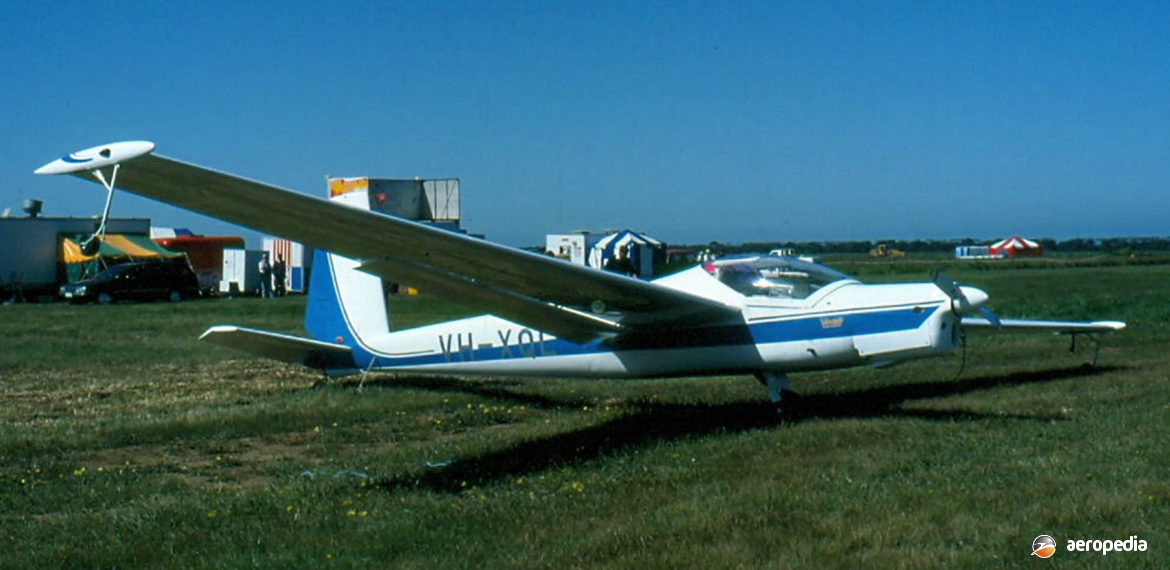Photograph:
Aerotechnik L-13SEH Vivat VH-XQL (c/n 920422) at Avalon, VIC in October 1997 (David C Eyre)
Country of origin:
Czechoslovakia
Description:
Two-seat powered glider and sport monoplane
Power Plant:
(L-13SE)
One 48 kw (65 hp) Aerotechnik Mikron II four-cylinder, four-stroke, in-line, inverted air-cooled engine;
(L-13SL)
One 52 kw (70 hp) Limbach L2000eoi four-cylinder horizontally-opposed air-cooled engine
Specifications:
- Wingspan: 17 m (55 ft 9 ¼ in)
- Length: 8.3 m (27 ft 2 ¾ in)
- Height: 2.3 m (7 ft 6 ½ in)
- Wing area: 20.20 m² (217.4 sq ft)
- Cruising speed: 154 km/h (95 mph)
- Stalling speed: 57 km/h (36 mph)
- Rate of climb: 152 m/min (500 ft/min)
- Cruising range: 560 km (285 miles)
- Empty weight: 470 kg (1,046 lb)
- Loaded weight: 720 kg (1,587 lb)
History:
The Vivat, a motor glider, made its first flight at Uherske Hradiste in Czechoslovakia in May 1987, production beginning five years later. More than 200 entered service with gliding clubs throughout Europe. Built by the Company which manufactured the Blanik sailplane, the type utilised the wings and tail of that type but coupled with a new fuselage and engine, It was seen by some as a simple and reliable form of personal transport.
The engine was the Walter Mikron III, built by Aerotechnik, fitted with a two-blade Hoffman composite propeller which had three settings, full-fine for take-off; feathered for gliding; and a position in between those two for powered cruising. The undercarriage was a main centre-wheel under the cockpit which was semi-retractable. The aircraft had a steerable tailwheel and outriggers on the wingtips. The fuselage was formed by lattice framework of welded steel alloy tubes covered by fibreglass panels. The wing was similar to the Blanik with Fowler flaps and ailerons covered with fabric. Fuel capacity was 50 litres (11 Imp gals).
The first of the type seen in this region was VH-XQL (c/n 920422) which was demonstrated at the Australian International Airshow at Avalon, VIC in October 1993. On 19 May 1993 this aircraft flew from Victoria to Tasmania across Bass Strait using 35 litres (7.7 Imp gals) of fuel.

